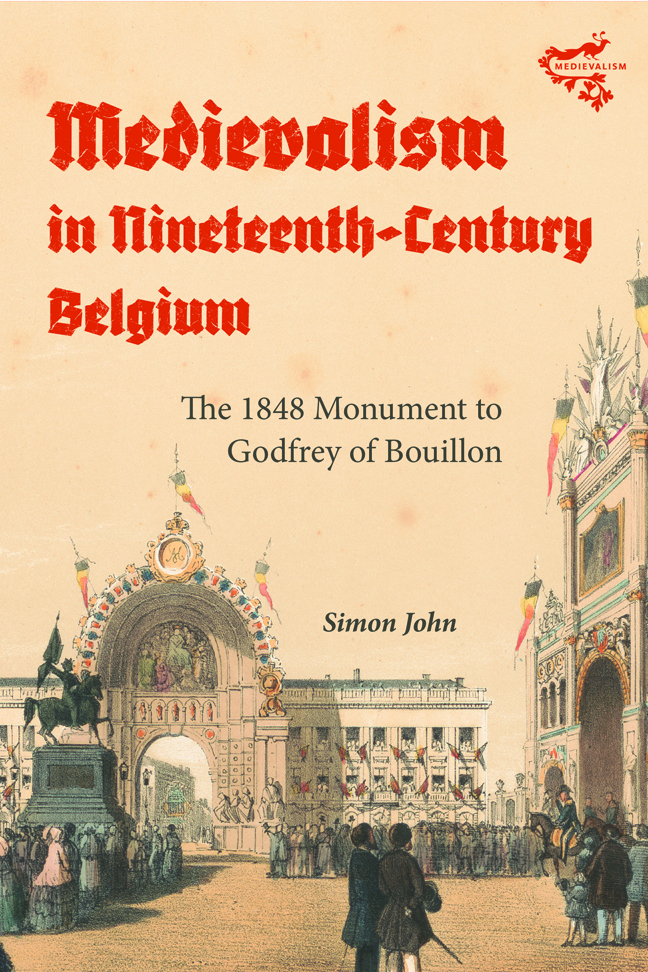Book contents
- Frontmatter
- Contents
- List of Illustrations
- Acknowledgments
- A note on language and names
- List of Abbreviations
- Preface
- Introduction
- 1 State-building, historical culture and public monuments in nineteenth-century Belgium
- 2 The physical setting of the monument: Brussels’ Place Royale
- 3 The creation of the monument
- 4 The changing meanings of the monument
- 5 The monument as a lieu de mémoire I: culture and politics
- 6 The monument as a lieu de mémoire II: history and national identity
- Conclusion
- Bibliography
- Index
- Medievalism
Conclusion
Published online by Cambridge University Press: 09 January 2024
- Frontmatter
- Contents
- List of Illustrations
- Acknowledgments
- A note on language and names
- List of Abbreviations
- Preface
- Introduction
- 1 State-building, historical culture and public monuments in nineteenth-century Belgium
- 2 The physical setting of the monument: Brussels’ Place Royale
- 3 The creation of the monument
- 4 The changing meanings of the monument
- 5 The monument as a lieu de mémoire I: culture and politics
- 6 The monument as a lieu de mémoire II: history and national identity
- Conclusion
- Bibliography
- Index
- Medievalism
Summary
While the name Godfrey of Bouillon has featured throughout this book, the crusader himself has not been its main concern. It has instead centred upon how that medieval figure was remembered in nineteenth-century Belgium, and the ways in which traditions linked to his memory shed light on politics, culture, ideas of nationhood and perceptions of the past in that era. It has focussed upon the monument to him erected by the Belgian national government in Brussels’ Place Royale in 1848, and considered a range of traditions and other lieux de mémoire connected to his memory. While a number of modern scholars have mentioned the monument in their work, the present study has for the first time comprehensively explored its cultural and political importance in nineteenth-century Belgium.
The findings offered here have yielded new insights on vital dynamics in Belgian history between 1830–1 and 1914. After the Belgian Revolution, the memory of Godfrey of Bouillon occupied a central place in the efforts of political elites to consolidate the new nation's independence. A key element in that process was the promotion of a teleological narrative of history that framed Belgian national identity as an impulse that had existed in the southern Netherlands for many centuries, but which had only become a political reality through the revolution. While other medieval figures from the history of the southern Netherlands – among them Charlemagne, Baldwin of Constantinople and Jacob van Artevelde – also featured in that narrative, Godfrey of Bouillon functioned as one of its cornerstones. Figures in Belgium were able to interpret the crusader in ways that resonated with contemporary preoccupations, ensuring that he occupied a main position in the national pantheon. Framed as a pious warrior who had responded to the papal call to join the First Crusade before founding a new monarchy in the Holy City and pursuing the legislative development of his kingdom by establishing the Assizes of Jerusalem, he provided the elites of a Catholic-majority nation established as a constitutional monarchy through revolution in 1830–1 with a potent historical precedent for their efforts to secure and consolidate it.
During this era, the memory of the crusader functioned as a shared point of reference among Belgium's political and linguistic constituencies. He appealed to both Catholic and Liberal politicians.
- Type
- Chapter
- Information
- Medievalism in Nineteenth-Century BelgiumThe 1848 Monument to Godfrey of Bouillon, pp. 187 - 192Publisher: Boydell & BrewerPrint publication year: 2023



